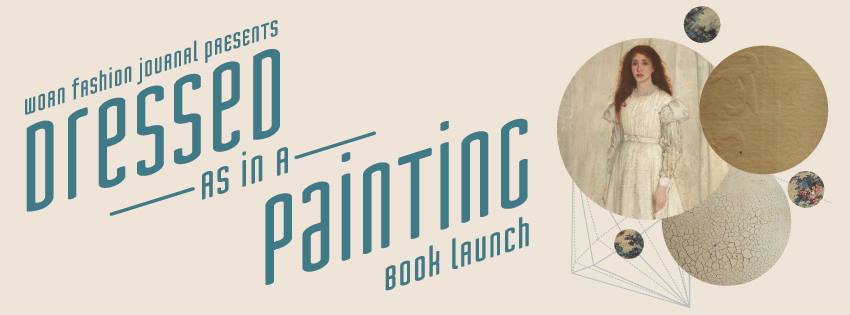In Dressed as in a Painting, author and historian Dr. Kimberly Wahl, who is an associate professor at Ryerson University’s School of Fashion, takes us to the second half of the nineteenth century, exploring the intersection of fashion, aestheticism and art in Victorian Britain. She examines cultural signifiers in the expression of aesthetic in print and on the body, and finds telling tension between the role of clothing in portrayal and practice.
On Friday, October 11th, Worn Fashion Journal and Type Books are co-hosting a book launch and conversation to celebrate this new work over Earl Grey gin and tonics. We spoke with Wahl about the importance of fashion as a source of information about a culture, her research process, and her fascination with this time period. But we didn’t give her any gin and tonics. Sorry, Kim.
SDTC: What first inspired you to explore this subject?
Kimberly Wahl: I’ve always been interested in clothing as conceived through art…but I became obsessed with artistic and Aesthetic forms of dress in the 19th Century because of a graduate course I took with Janice Helland at Queen’s University where I completed my PhD in 2004. I had always been intrigued by the ways in which art and fashion converge in the modern period, but didn’t realize it was possible to write a dissertation on a related topic until Dr. Helland shared her interdisciplinary approach to examining women, art production and various forms of art and design culture in the 19th Century.
SDTC: What can fashion tell us about the state of culture in a given historical period?
KW: Fashion has often been ignored or downplayed as a viable source of information about a given culture. It certainly has been dismissed in the past by many academic disciplines due to its commercial dimensions and ties to mass culture. This is quickly changing however, and many academic approaches now embrace fashion’s role as an integral and vital signifier of cultural meaning—particularly in its ability to articulate important intersections between embodiment, identity and social values, practices, and preferences.
SDTC: How does one go about researching a book like this? Did you live in archive libraries? The basements of museums?
KW: This book took many years to complete—it was initially based on research that I compiled and completed for my dissertation in 2002 and 2003, but was reworked, revised and updated many years later when my interest was renewed while working in the School of Fashion at Ryerson University from 2006 onward.
Most of my research was completed at the British Library, and the National Art Library at the Victoria and Albert Museum. Initially, much of my time was spent poring over 19th century art journals, fashion magazines, exhibition catalogues and other forms of literary and print culture. I did examine actual garments at a variety of museums in and around London, but my focus was primarily on the ways in which artistic and Aesthetic dress was pictured or portrayed in the print culture of the late 19th century.
SDTC: What was the most intriguing thing you discovered while writing the book?
KW: Two things struck me while writing this book: One, there is a significant gap between the way in which Aesthetic dress was “pictured” in the art and fashion imagery of the 19th century and how it was actually constructed and worn on the body. This led to some crucial theorizing about the symbolic value of artistic representations of alternative modes of clothing versus the lived reality of dress in practice. Two, it became clear to me that although we tend to equate alternative and subcultural forms of dress with the mid-to-late 20th century, this kind of cultural critique and the formation of oppositional group identities based on clothing clearly evolved from a much earlier 19th century context.
SDTC: What about this time period fascinates you?
KW: People tend to draw a sharp line between the past and present–particularly in fashion, there seems to be a general consensus that 19th and 20th century styles in fashion were radically different. While a quick visual appraisal supports this, there are deeper themes at work. A close study of Victorian dress in the late 19th century reveals that many of the cultural reforms and values we associate broadly with “modernity,” such as the development of an artistic avant-garde, feminism and social activism, were in fact in place during a much earlier period.
Ultimately, to me, Victorian culture is at its most fascinating in moments of rupture, when a negotiation takes place between conflicting and competing tensions: past and present; old and new; materiality and ephemerality.
WORN Fashion Journal & Type Books Presents: Dressed as in a Painting Launch. Friday, Oct. 11th, 7pm-9pm, TYPE Books, 883 Queen St. W.




 Follow Us On Instagram
Follow Us On Instagram
